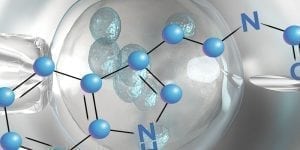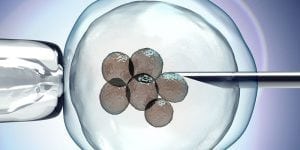Intralipid infusion is an intravenously administered drug used to increase the amount of calories a person needs. More commonly, this drug is given to patients who exhibit symptoms of EFAD or essential fatty-acid deficiency. People who have EFAD have a multitude of symptoms that can range from ADD (attention deficit disorder) to common birth and postpartum-related problems.
What Does Intralipid Infusion Typically Provide
Intralipid infusion (also referred to as lipid emulsion) provides essential fatty acids or EFAs that are necessary for people with particular disorders. A few of the disorders are:
– Irritable Bowel Syndrome (IBS)
– Attention Deficit Disorder (ADD)
– Asthma
– Arthritis (source)
The EFAs that intralipid infusion provides are Omega-3 and Omega-6 fatty-acids (linoleic and alpha-linolenic acids respectively). Omega-3 fatty acids are necessary for brain development from pregnancy onward until the child is two-years-old. Infusion of intralipid infusion is well-targeted at suppressing natural killer cell activity or NKa.
In certain people, the white blood cells have a hard time determining the difference between an embryo and an intruder. This causes the body to reject the implanted egg and flush it from the system.
Intralipid Research and IVF
Recently, intralipid infusion shows to be extremely effective in the subduing of NK (natural killer) cells or white blood cells. In a study done by Roussev and Acacio, the results showed that within three weeks, 50 women showed lasting effects of intralipid infusion for NK cell suppression in the following time frame:
– 47 patients (six to nine weeks)
– 2 patients (five weeks)
– 1 patient (four weeks)

While the testing for NK cell activity diminished in these women, it did not show the probability of successful pregnancies in women. Assisting this research was a study performed by Care Fertility in Nottingham, England. In this study, 96 women were tested for the ability to perform a successful IVF (in vitro fertilization). The study precisely picked the women due to their inabilities to conceive after six prior IVF attempts.
50 women were given an intralipid infusion and implanted via IVF, while the other 46 were not infused. The results showed a significant decrease in the inability to conceive. In the 50 women who were given intralipid infusions, the tests showed only two miscarried. However, the probability increased to the seven miscarriages that occurred without the use of infusion.
Half of the 50 women who received the intralipid therapy had successful pregnancies, while two of the remaining 20 had miscarriages; the remaining 23 had no information. On the other hand, of the women who did not receive the intralipid therapy, four women (out of the 46) had successful pregnancies. In the same group, seven women miscarried. This study showed substantial evidence of the essential fatty-acid injections working for IVF-failed pregnancies.
Intralipid Dosage Frequency
Intralipid is normally administered both prior and during the attempt at conceiving a child. The drug is often given once or twice prior to the pregnancy and is prolonged by one dosage per month after the initial conception attempt. Throughout the period prior-to and during conception, tests are performed by a physician that will determine or alter the administration of intralipid.
Intralipid is given via an intravenous infusion control pump. The limits are usually 2.5 grams per kilogram of the person’s weight, meaning that an average female (weighing 156 pounds) would intake 177 grams of 20 percent of an intralipid admixture compound.
While research is still continuing on the topic of intralipid infusions and the positive effects it can have on IVF treatments, women who have endured repeated failed IVF treatments are given a bit of fresh hope with the new combination of IVF and intralipid infusion and the possibility for increasing IVF success rates.




